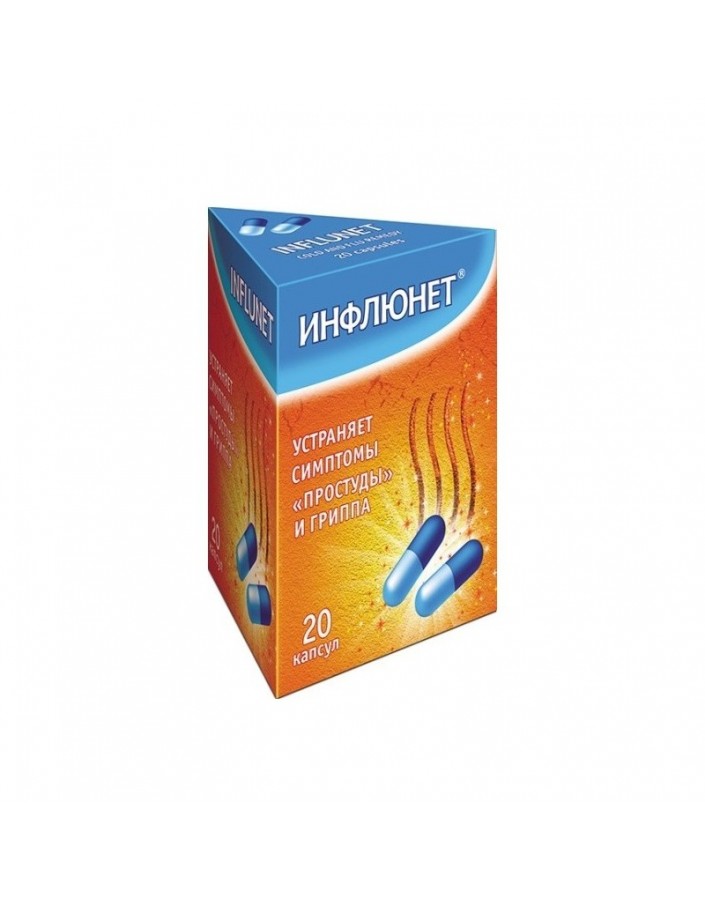



INFLUNET CAPSULES - 20 pcs

Security policy (edit with Customer reassurance module)

Delivery policy (edit with Customer reassurance module)

Return policy (edit with Customer reassurance module)
Active ingredients: Paracetamol - 175 mg, Ascorbic acid - 150 mg, succinic acid - 60 mg, rutoside trihydrate (in terms of rutoside) - 10 mg, phenylephrine hydrochloride - 2.5 mg
Excipients: hyprolosis - 4.5 mg, colloidal silicon dioxide - 2.5 mg, lactose monohydrate - 21.3 mg, Magnesium stearate - 4.2 mg. The hard gelatin capsule contains: gelatin, indigo carmine (E 132), brilliant blue dye (E 133), titanium dioxide (E 171).
It is necessary to consult with your doctor if you need a joint reception with other drugs.
Stimulants of microsomal oxidation in the liver (phenytoin, ethanol, barbiturates, rifampicin, phenylbutazone, tricyclic antidepressants) increase the production of hydroxylated active metabolites of paracetamol, which leads to the possibility of the development of severe intoxications with minor overdoses.
Paracetamol enhances the effects of MAO inhibitors, sedative drugs, ethanol.
Antidepressants, anti-parkinsonian, antipsychotic drugs, phenothiazine derivatives increase the risk of urinary retention, dry mouth, constipation.
Glucocorticosteroid drugs increase the risk of developing glaucoma. Phenylephrine reduces the hypotensive effect of guanethidine.Guanethidine enhances the alpha-adrenostimulating effect, and tricyclic antidepressants increase the sympathomimetic effects of phenylephrine.
Inside, after eating, drinking plenty of water. Take 2 capsules after 4-6 hours, but not more than 4 times a day, for 3 days. The maximum daily dose is 8 capsules.
If within 3 days after the start of taking the drug does not come to improve health, you should stop taking the drug and consult a doctor.
Symptoms (overdose is mainly caused by paracetamol):
pallor of the skin, anorexia (lack of appetite), nausea, vomiting and abdominal pain, increased activity of liver transaminases, hepatonecrosis, arrhythmia, ventricular tachycardia, increased prothrombin time, increased blood pressure.
Treatment: at the prehospital stage - gastric lavage, reception of Activated carbon.
Symptomatic therapy: Paracetamol antidote - acetylcysteine.
When used in recommended doses and duration of the drug is well tolerated, side effects develop extremely rarely.
Symptomatic treatment of colds and flu, accompanied by fever, headache, chills, nasal congestion, sore throat and sinuses.
The drug is contraindicated during pregnancy and lactation (breastfeeding).
Over the counter
In a dry place, at a temperature not higher than 25 ° C